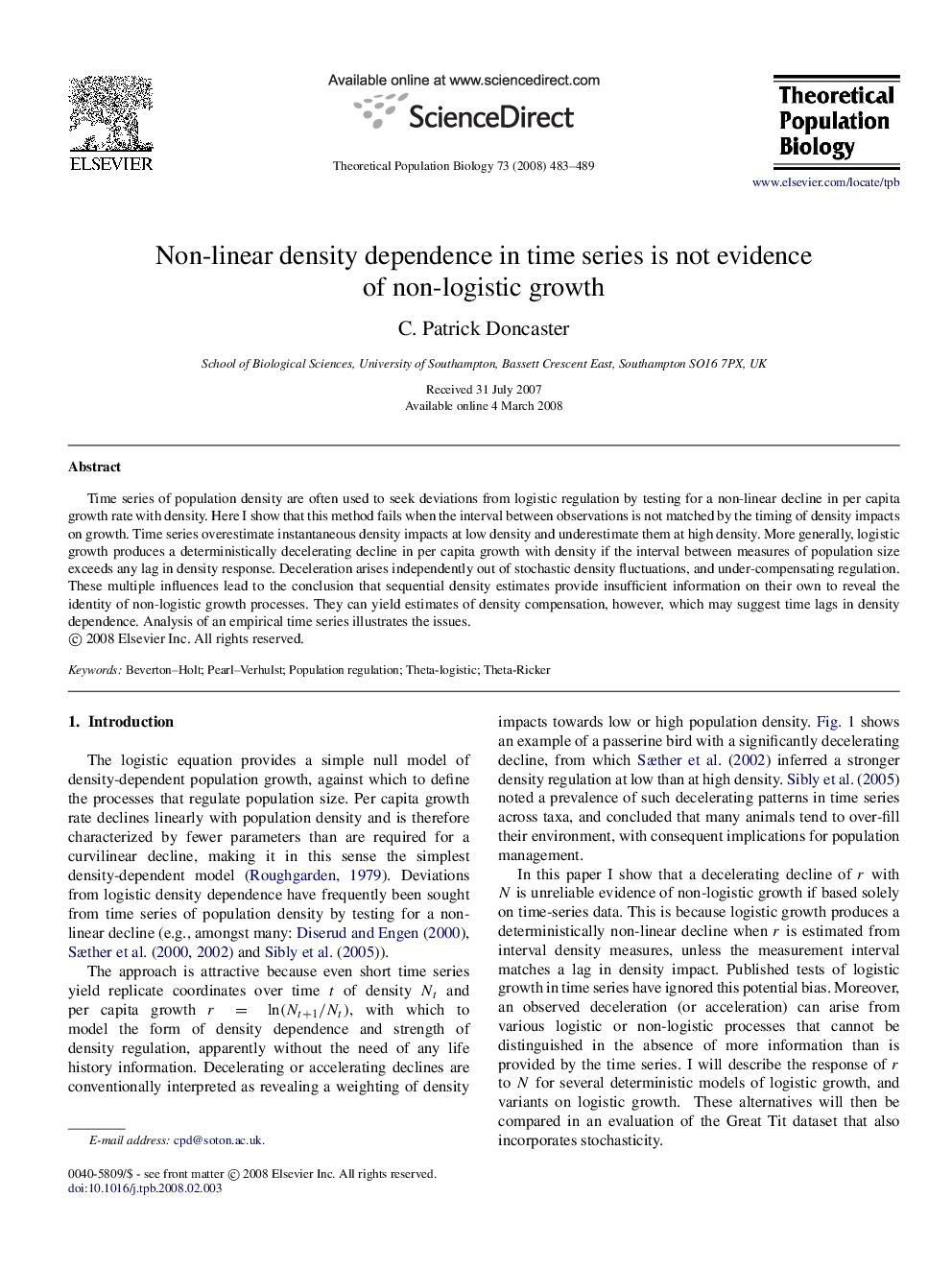| Article ID | Journal | Published Year | Pages | File Type |
|---|---|---|---|---|
| 4502718 | Theoretical Population Biology | 2008 | 7 Pages |
Time series of population density are often used to seek deviations from logistic regulation by testing for a non-linear decline in per capita growth rate with density. Here I show that this method fails when the interval between observations is not matched by the timing of density impacts on growth. Time series overestimate instantaneous density impacts at low density and underestimate them at high density. More generally, logistic growth produces a deterministically decelerating decline in per capita growth with density if the interval between measures of population size exceeds any lag in density response. Deceleration arises independently out of stochastic density fluctuations, and under-compensating regulation. These multiple influences lead to the conclusion that sequential density estimates provide insufficient information on their own to reveal the identity of non-logistic growth processes. They can yield estimates of density compensation, however, which may suggest time lags in density dependence. Analysis of an empirical time series illustrates the issues.
